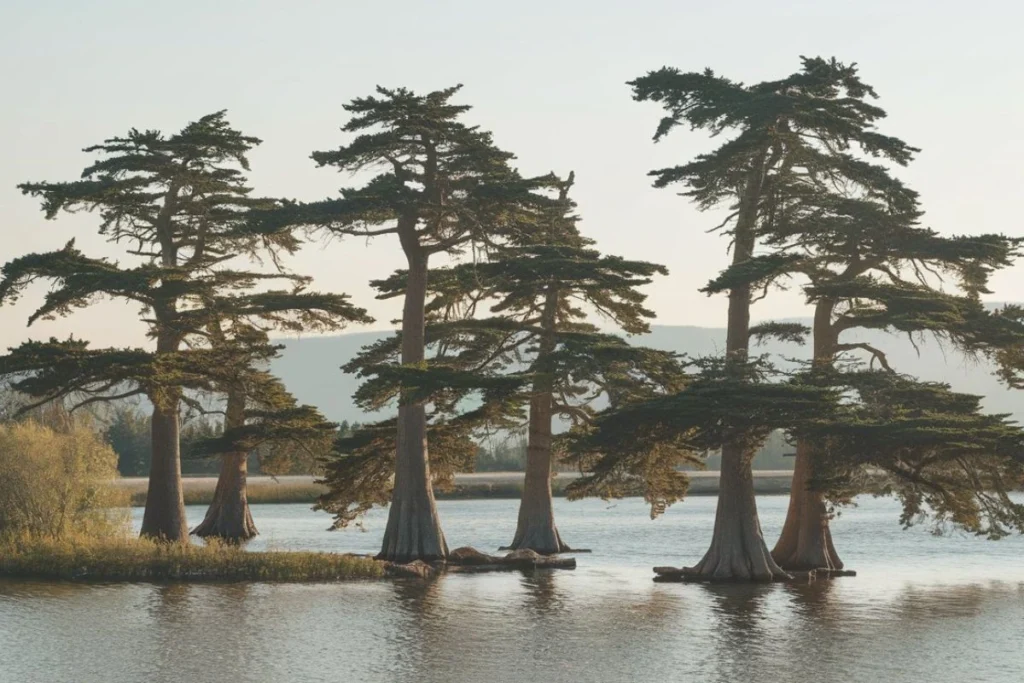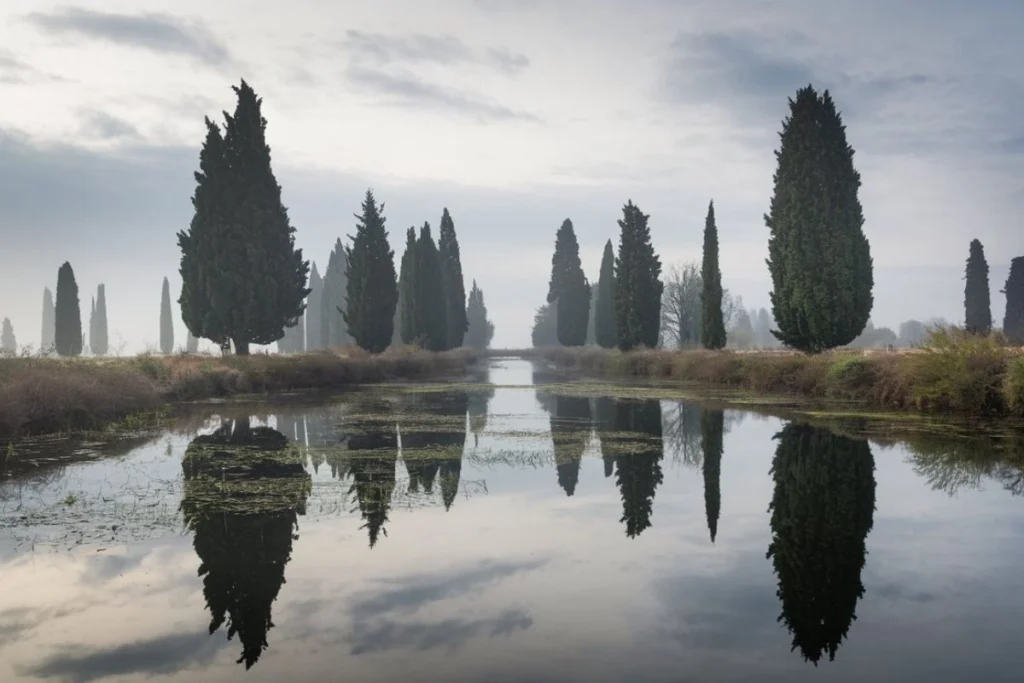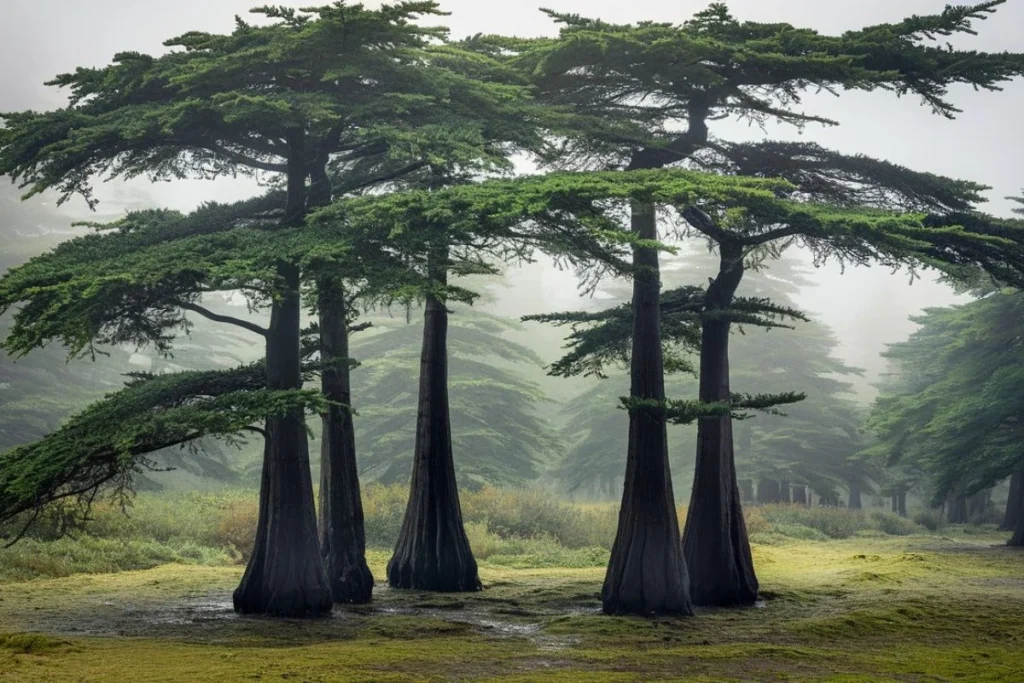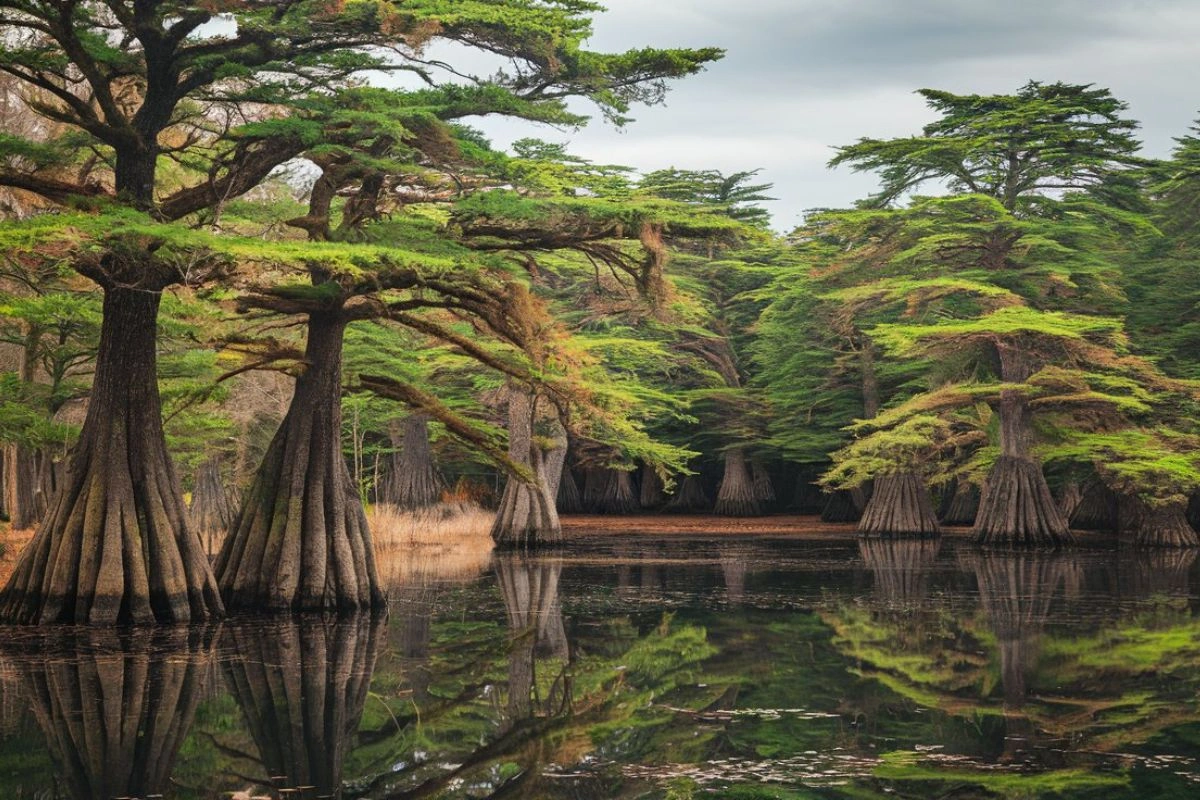The cypress tree, with its striking silhouette and enduring greenery, has captured human imagination for centuries. Found in diverse regions around the globe, the tree is celebrated for its adaptability, symbolic richness, and practical applications. From ancient cultures to modern landscapes, the cypress holds an indelible place in nature and human history. This comprehensive exploration covers its origins, ecological importance, uses, and cultural significance.
1. Introduction to Cypress Trees
The cypress tree, a coniferous evergreen from the Cupressaceae family, is admired for its striking beauty and remarkable resilience. Its name derives from Greek mythology, and the tree has been mentioned in historical texts, artistic depictions, and religious traditions.
1.1. Characteristics
Cypress trees vary in appearance and habitat, but their most recognizable features include:
- Evergreen Foliage: Most cypress species retain their leaves year-round.
- Pyramidal Shape: Many cypress exhibit a symmetrical, conical structure.
- Diverse Sizes: Depending on the species, they can range from small shrubs to towering giants reaching over 80 feet.
- Unique Cones: Cypress trees produce woody cones with scales that house their seeds.
1.2. Geographical Range
Cypress trees thrive across diverse ecosystems, from the Mediterranean to North America and Asia. Some species are suited to swampy wetlands, while others prefer arid or rocky soils.

2. Evolution and History
Cypress have existed for millions of years, adapting to various climates and ecological conditions. Fossil evidence suggests that ancient relatives of the modern cypress existed during the Mesozoic Era, coexisting with dinosaurs.
2.1. Early Cultivation
Historically, cypress trees were cultivated for their wood and spiritual significance. The ancient Egyptians utilized cypress wood for constructing sarcophagi because of its durability and resistance to decay. In the Mediterranean, cypress trees were planted near cemeteries to symbolize immortality.
2.2. Mythological Roots
The cypress tree appears in numerous myths and legends:
- Greek Mythology: The tree is associated with Cyparissus, a boy who mourned the loss of his beloved stag. Apollo transformed him into a cypress tree as a symbol of eternal grief.
- Eastern Symbolism: In Persian gardens, cypress trees represent strength and eternity.
3. Prominent Species of Cypress Trees
3.1. Italian Cypress (Cupressus sempervirens)
This iconic tree, with its slender, columnar shape, is a staple of Mediterranean landscapes. It is commonly planted along pathways and in cemeteries.
3.2. Bald Cypress (Taxodium distichum)
Native to the southeastern United States, the bald cypress is unique for being deciduous. It thrives in wetlands, producing “knees” that protrude from the water, stabilizing the tree and improving oxygen intake.
3.3. Monterey Cypress (Cupressus macrocarpa)
This coastal species from California is famous for its wind-sculpted appearance. It is often planted for erosion control in coastal areas.
3.4. Leyland Cypress (Cupressus × leylandii)
A hybrid species prized for its rapid growth and dense foliage, the Leyland cypress is commonly used as a privacy screen.
3.5. Arizona Cypress (Cupressus arizonica)
Native to the southwestern United States, this drought-tolerant species features silvery-blue foliage, making it a popular ornamental tree.
4. Ecological Contributions
Cypress are crucial for preserving ecological balance. They provide shelter, food, and stability in their habitats.
4.1. Soil Stabilization
Cypress , particularly those in wetland areas, help prevent soil erosion. Their extensive root systems stabilize the land and protect against flooding.
4.2. Biodiversity Support
These trees host diverse wildlife:
- Birds and Mammals: Birds such as owls and hawks often nest in cypress . Small mammals take refuge within the thick branches of cypress .
- Aquatic Species: In swampy environments, bald cypress trees create habitats for fish and amphibians.
4.3. Carbon Sequestration
trees absorb significant amounts of carbon dioxide, contributing to climate change mitigation by reducing greenhouse gas concentrations.

5. Cultural and Symbolic Importance
5.1. Spiritual Significance
Cypress trees are frequently linked to themes of life, death, and immortality. Their towering presence and evergreen nature make them a symbol of immortality in many cultures.
- Cemeteries: In Islamic, Christian, and Mediterranean traditions, cypress are planted in cemeteries to represent eternal life.
- Persian Gardens:In Persian culture, the cypress represents strength and independence.
5.2. Artistic Depictions
The cypress has inspired artists, poets, and writers for centuries:
- Van Gogh: In his iconic painting Wheat Field with Cypresses, Van Gogh used the tree to convey movement and emotion.
- Persian Poetry: The tree frequently appears in Persian poetry as a metaphor for beauty and steadfastness.
6. Practical Uses
6.1. Timber
Cypress wood is prized for its exceptional durability and natural resistance to decay.
- Construction: Doors, beams, and bridges.
- Furniture: Cabinets and chests.
- Shipbuilding: Its water-resistant qualities make it ideal for boats.
6.2. Aromatherapy
Essential oil extracted from cypress trees is used for therapeutic purposes, including:
- Stress Relief: Its soothing scent aids in alleviating anxiety.
- Respiratory Health: Cypress oil is known to ease breathing and relieve congestion.
6.3. Landscaping
Cypress trees are a popular choice in landscaping for their versatility and aesthetic appeal. They are often planted as:
- Hedges: For privacy and noise reduction.
- Ornamental Trees: In gardens and parks.
7. Growing and Caring
7.1. Planting Conditions
Cypress thrive in diverse environments, but specific conditions enhance their growth:
- Sunlight: Full sun exposure is ideal.
- Soil Type: Well-drained, slightly acidic soils are preferred.
- Watering Needs: Young trees require consistent watering, while mature trees are drought-tolerant.
7.2. Pruning Techniques
Routine pruning is crucial for preserving the shape and health of trees. Removing dead or diseased branches prevents pest infestations and promotes growth.
7.3. Pest and Disease Management
Cypress trees can be affected by:
- Cypress Canker: A fungal disease causing dieback of branches.
- Aphids: These pests feed on sap, weakening the tree.
Preventative measures, such as proper spacing and organic treatments, can mitigate these issues.
8. Landscaping Trends with Cypress Trees
In modern landscaping, cypress are a preferred choice for their timeless beauty and functionality. They are used in:
- Mediterranean-Style Gardens: To evoke a classic European ambiance.
- Privacy Screens: Dense species like the Leyland cypress are ideal for creating natural barriers.
- Windbreaks: Planted strategically, they protect homes and gardens from strong winds.
9. Environmental Benefits
Cypress trees contribute significantly to environmental sustainability:
- Air Quality Improvement: By absorbing pollutants, they enhance air quality.
- Flood Mitigation: In wetlands, cypress trees act as natural sponges, reducing the impact of heavy rainfall.
10. Cypress Trees in Religion and Mythology
Cypress hold profound spiritual significance across various religions:
- Christianity: The tree symbolizes resurrection and eternal life.
- Islam: It is revered as a sacred tree, often planted near mosques and tombs.
- Hinduism: The tree are considered auspicious and associated with the divine.
11. Cypress Trees in Literature and Art
The enduring image of the tree has left a mark on global literature and art. Poets like Dante Alighieri and John Keats referenced the tree as a symbol of solemnity and permanence.
12. Economic Importance of Cypress Trees
Beyond their ecological and symbolic roles, cypress have significant economic value:
- Timber Industry: Their wood is in high demand for construction and furniture-making.
- Essential Oils: Cypress oil is a popular product in the wellness market.
- Landscaping Services: The demand for cypress trees in landscaping drives a profitable industry.
13. Threats to Cypress Trees
Despite their resilience, cypress trees face several threats:
- Deforestation: Overharvesting for timber has led to a decline in certain species.
- Climate Change: Rising temperatures and altered rainfall patterns impact their growth.
- Pests and Diseases: Invasive species and fungal infections pose risks.
14. Conservation Efforts
To protect cypress trees, various conservation programs focus on:
- Reforestation: Planting cypress saplings in degraded areas.
- Genetic Preservation: Maintaining seed banks to safeguard genetic diversity.
- Wetland Restoration: Protecting swamp habitats for species like the bald cypress.
15. Fun Facts About Cypress Trees
- Some trees, like the Taxodium mucronatum in Mexico, are among the oldest living trees, with ages exceeding 2,000 years.
- The wood of ancient cypress was used to construct Noah’s Ark, according to biblical accounts.
- Cypress cones were used in ancient rituals to ward off evil spirits.

16. Frequently Asked Questions (FAQs)
16.1. How long does a cypress tree live?
Depending on the species, cypress trees can live for several hundred to several thousand years.
16.2. Are all cypress trees evergreen?
Most species are evergreen, but some, like the bald cypress, are deciduous.
16.3. Can cypress grow in wetlands?
Yes, certain species, like the bald cypress, thrive in wet, swampy areas.
16.4. What are the advantages of using cypress essential oil?
Cypress oil has antiseptic, anti-inflammatory, and calming properties, making it popular in aromatherapy.
16.5. How tall can cypress trees grow?
Cypress trees can reach heights of 100 feet or more, depending on the species.
16.6. Are cypress trees fire-resistant?
Some cypress species, like the Mediterranean cypress, exhibit fire-resistant qualities, making them valuable in fire-prone regions.
17. Conclusion
Cypress trees stand as enduring symbols of strength, beauty, and resilience. Their contributions to ecosystems, cultural heritage, and human industries make them invaluable in countless ways. From ancient myths to modern landscapes, the cypress tree remains a testament to nature’s ability to inspire and sustain life.

